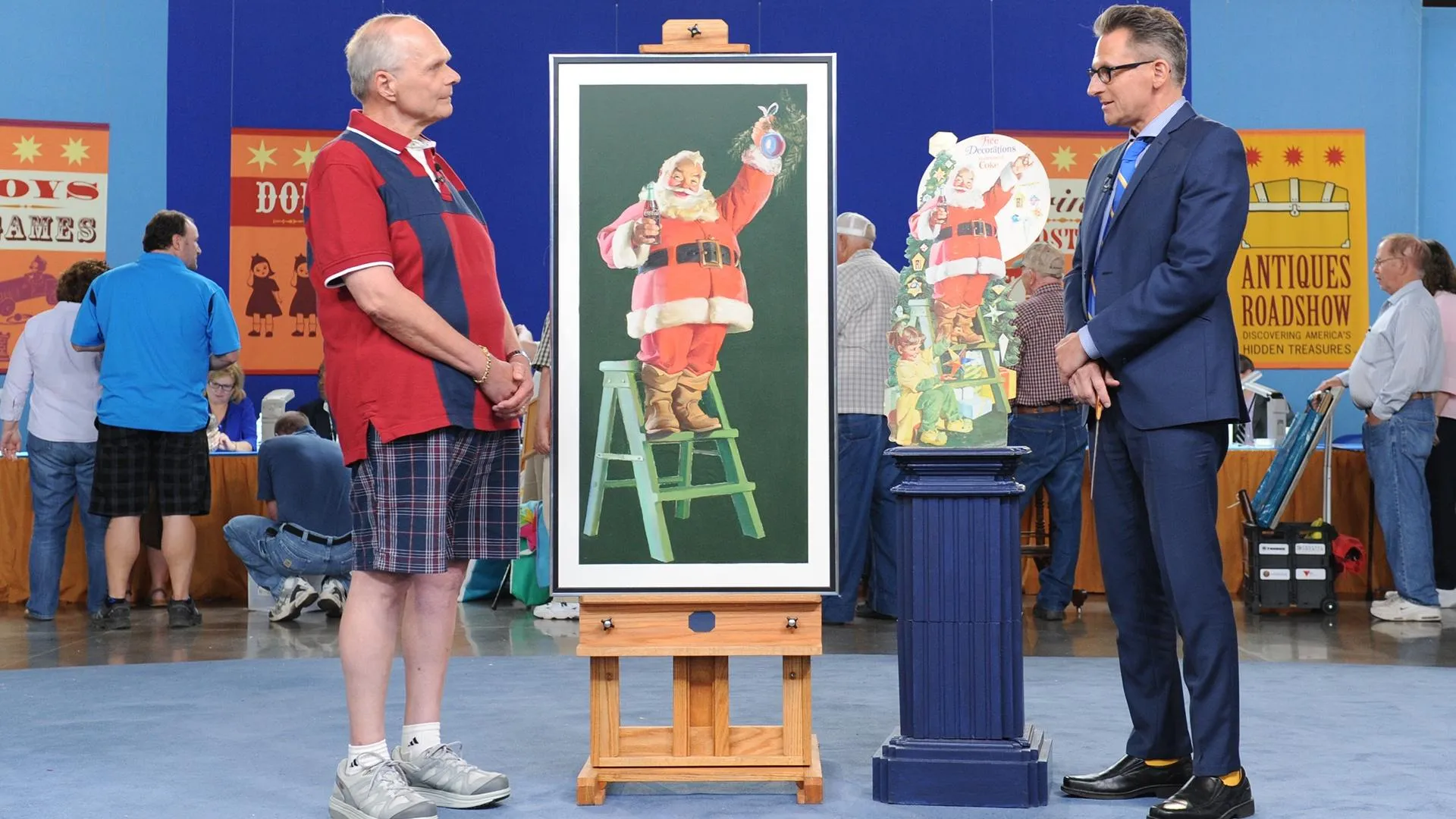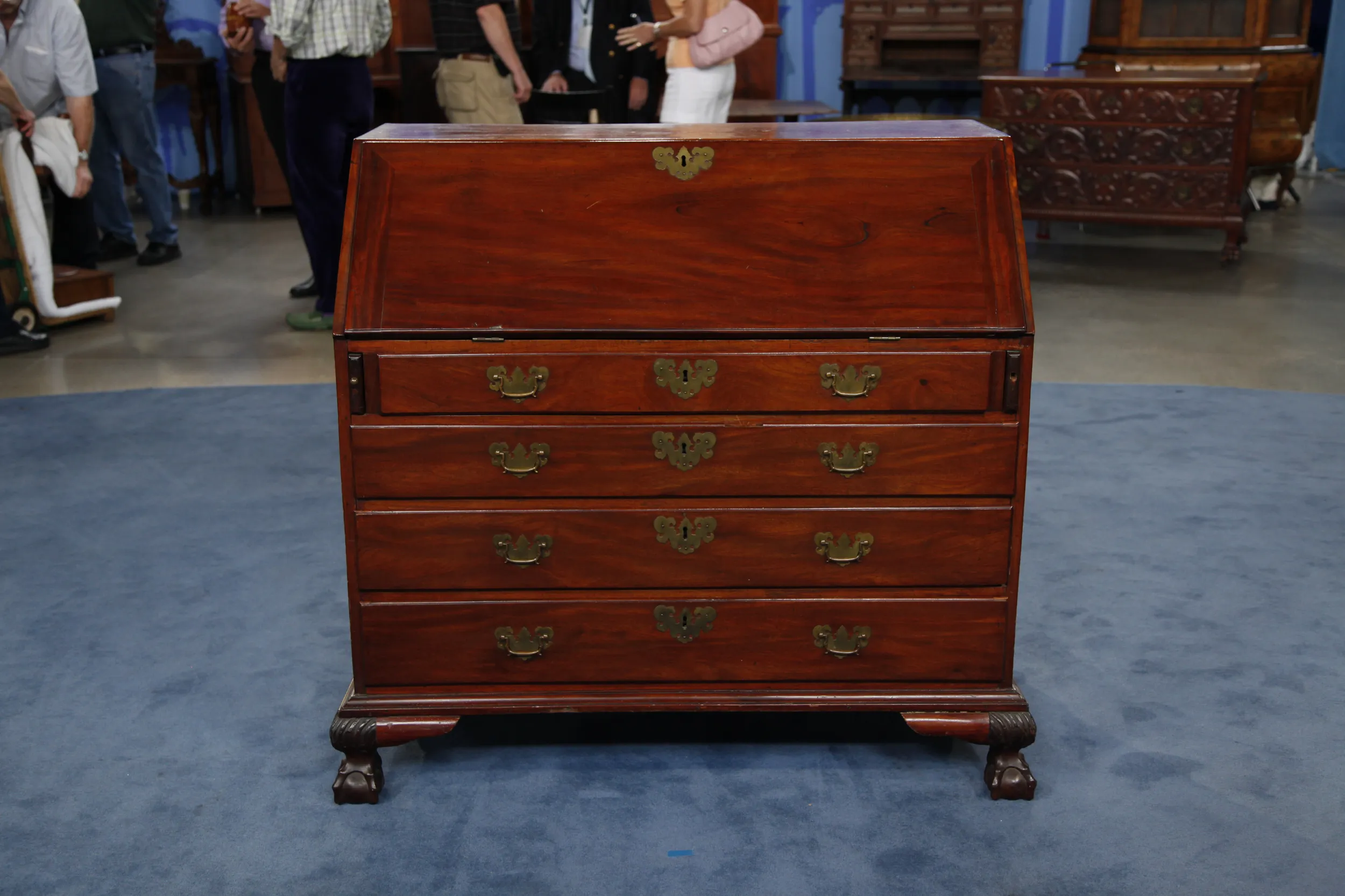GUEST: I don't know a whole lot about it. It was given to my grandmother from a friend of my grandmother's. It went from my grandmother to my dad and from my dad to me. I've had it probably 25 years.
APPRAISER: Do you know what country it's from, what period it might be? Have you ever had it appraised?
GUEST: No, nothing. I don't know anything about it, I'm ashamed to say. I've been dragging it around for 25 years, and I just love it.
APPRAISER: As an appraiser, the first thing I do is I look at the overall form, and then I look at the wood. So you have a deep, rich mahogany wood here, which is beautiful on top, so that's a good sign of age. I'm looking for signs of age as we go along. So the next thing I do is I look at the interior, because usually the interior on a piece tells you a lot more about it than the exterior. So we'll pull it out. We want to know where it's from, what it is, right? So we know it's a mahogany desk, and look what you have in here.
GUEST: I know, yeah. Little pieces have been coming off.
APPRAISER: You have little pieces...
GUEST: But I've kept them.
APPRAISER: Well done for keeping them. You can see obviously, they've fallen off the front, but it's great that you have them. It's dovetail construction, which is an 18th century means of construction. You've got a scoring line here. This is how the cabinet maker lines up the side drawer to the front. It's oak secondary wood, which tells you it's probably made in England. So it's an English desk.
GUEST: Oh!
APPRAISER: Inside the drawer, we have these cracks, and this is shrinkage over time-- again, a good sign of age. And then what's really fun about it is the cabinet maker has actually written "left" on the back, so now you know it's your left drawer and how to put it back in.
GUEST: I had no idea that was there! Wow.
APPRAISER: Let's get that back in. We'll put the feet back in because you don't want to lose those.
GUEST: Not now, no.
APPRAISER: All right, so then we look to see what kind of things make it special and a little bit more value, and in this desk, what's neat about it is the door is in the shape of a tombstone, an actual tombstone that you would see. It has the arch at the top. Normally, they're just rectangular and kind of boring. So you've got some good storage space in there, and you've got these wonderful butterfly hinges, and if they were polished up, they'd really pop in the room. As you're sitting there, you could see them. It's a little bit of a nicer piece than just your plain Jane desk. The pulls are brass, and they are original to the piece. There are no additional holes there, which shows me that this was the original set that was there. The country that it's from is England. It's a George III chest of drawers. It's probably made about 1775, 1780.
GUEST: Really?
APPRAISER: The positive thing is it is 18th century. The not as good thing is the market is quite depressed right now, so it's a soft market. In today's market, given the condition-- it needs a little restoration work, which I think is worth doing because it is 18th century-- the value of this piece, at auction, would be $1,000 to $1,500.
GUEST: Good, okay.
APPRAISER: And that's a great gift.
GUEST: It is. Should I choose to insure it, is there another price for that?
APPRAISER: You would probably insure it for $2,500.
GUEST: Okay.












